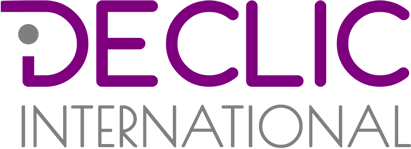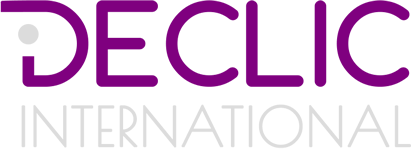NEW BOOK REVEALS WHAT INCLUSIVE LEADERS DO DIFFERENTLY

Interview with Thais Compoint
“How to become an inclusive leader: the winning leadership habits in a diverse world” by Thais Compoint, is a guide for business leaders to attracting and inspiring diverse people. It comes out timely, in a historical moment when we see an upsurge of intolerance across the globe, alongside public statements in favour of diversity by several corporations, such as Nike, Starbucks and Coca-Cola.
Thais Compoint, a leading inclusion and diversity specialist, addresses a major paradox. Countless studies demonstrate that companies that embrace inclusion and diversity are more successful. For instance, a Catalyst study showed that companies with the highest representation of women in senior management deliver 34 percent greater returns to investors. According to a McKinsey report, ethnically diverse companies are 35 percent more likely to outperform financially. Yet, few business leaders know how to drive inclusion and diversity. An Oxford Economics survey showed that only 28 percent of global executives think their leaders are prepared to lead a diverse workforce.
Who did you write the book for?
My main target audience are open-minded business leaders and managers looking for new ways to increase engagement, productivity, and creativity in their teams. The book will also be very useful to human resources professionals and inclusion and diversity practitioners looking for concrete tips to create an inclusive culture.
Why should business leaders and managers care about inclusive leadership?
Because inclusive leadership can help them achieve their goals more easily, while bringing out the best in the people around them. Several studies show that teams led inclusively are more engaged, productive and innovative. For instance, the “Aristotle project” was a research done by Google to find out the secret of productive teams. They discovered that the key characteristic of productive teams is the feeling of psychological safety generated by a culture where people feel heard and safe to be themselves. In other words, an inclusive culture.
What prompted you to write “How to become an inclusive leader”?
Throughout my career, I’ve met several managers who asked me the question “Thais, how can I make inclusion happen in everyday life?”. Even managers who are convinced of the benefits of inclusion and diversity often don’t know what to do. They either lack practical information, or are totally overwhelmed by an overload of fragmented information that disconnects different inclusion and diversity topics.
What’s unique about your book?
I’m an avid reader of all inclusion and diversity literature. There are excellent books about how to develop inclusion and diversity corporate strategies and inclusive human resources processes. I can think of “Inclusive leadership” by Charlotte Sweeney and Fleur Bothwick, or “Inclusive talent management” by Stephen Frost and Danny Kalman. There are also books on specific diversity topics by experts such as Avivah Wittenberg-Cox for gender balance, or Andrew Molinski for cross-cultural management. However, I’ve never found a book exclusively focused on inclusive leadership behaviours, covering all major inclusion and diversity topics. My book is a one stop shop for all key inclusion and diversity topics from a leadership behaviour perspective. My goal is to make life easier for business leaders and managers who are not experts, and who have to deal with many competing topics alongside their core business activities.
What’s the focus of your book?
I’m focusing on the inclusive leadership habits business leaders and managers can adopt every day, anywhere, to create an inclusive culture and increase their team’s performance. The book is packed with real-life examples, concrete tips and practical tools. It’s completely action-oriented. For example, if you want to attract more women candidates, in two minutes you can check if the language you’re using in your job ad is gender neutral by using free internet tools, such as the “gender decoder”.
How do you define inclusive leadership?
Inclusive leadership is the capacity to lead successfully people with different backgrounds. In other words, the ability to attract, inspire and influence people of all genders and ages, with different cultures, abilities, and lifestyles. It’s about understanding and managing human differences effectively.
Is it not only about gender diversity?
No, it’s about managing human differences in general. The book shows concretely how to accelerate gender balance, manage multiple generations, promote disability inclusion, navigate cross-cultural differences, embrace ethnic diversity, create a faith-friendly environment, build an LGBT (lesbian, gay, bisexual and transgender) inclusive culture and support work-life integration.
Is it not confusing?
No because throughout the book I propose a framework “The Inclusive leadership Propeller Model ©” that allows managers to navigate all types of human differences in all sorts of leadership situations. This makes life easier for anyone leading teams.
What are the signature skills of inclusive leaders?
Fairness, empathy and proactivity. Inclusive leaders are aware of the impact of unconscious biases in their decisions and behaviors, and use strategies to mitigate such impact in order to ensure fairness. In addition, they are constantly putting themselves in other people’s shoes, in order to understand and adapt to people’s different perspectives and needs. Finally, they take every opportunity to accelerate change, by being proactive.
How can you be proactive without positively discriminating?
The point is not to hire or promote a person only because she or he belongs to a minority group, forgetting all about talent. This would be positive discrimination. There are several ways you can be proactive without compromising your standards. For instance, by sending out job adverts to organisations specialised in disability inclusion, by requesting gender diverse shortlists of candidates, by mentoring people from ethnic minorities, by showing visible support to LGBT initiatives, by pairing people from different generations, so that they can learn from each other. The point is to remove the barriers that prevent us from recognizing talent when it comes in different sizes and shapes. In all cases, decisions should always focus on skills and competence.
What are the key messages of your book?
First, there’s a lot leaders and managers can do without needing permission or resources. Anyone can be a positive change agent, no matter where you are. Second, if you’re not intentionally including, you might be unintentionally excluding. Inclusive leadership requires you to be mindful of what you do, and the impact you have on others. Third, inclusive leadership is about adapting to everybody’s differences, including those differences that the “majority” brings. After all, we’re all different, not from each other, but like each other. Inclusion is not an “us versus them” game. It’s a togetherness game where everybody should win.
Praise for “How to become an inclusive leader”
“Concise, insightful, action-oriented.”
—Chantal Goossens, Global Customer Director, THE COCA-COLA COMPANY
“Do you want to become the leader everyone wants to work with? Then you must read this book.”
—Alberto Platz, VP Global Talent Acquisition and Engagement, SWAROVSKI
“A real philosopher’s stone for our mind. Energising and transformational”
—Marc Leymonerie, Group Director of IT Security Solutions and Compliancy, AIR FRANCE KLM
“A very credible and unique approach to successfully motivating and engaging diverse teams.”
—Rohini Anand, Senior VP Corporate Responsibility and Chief Diversity Officer, SODEXO
How to become an inclusive leader by Thais Compoint – Realease date: 13 March 2017
Paperback 186 pages £19,99 – Kindle £14,99 – Available on Amazon
ISBN: 978-1542542364 – Publisher Déclic International

Are you an inclusive leader? Take the inclusive leader quiz and find out!
[viralQuiz id=1]



